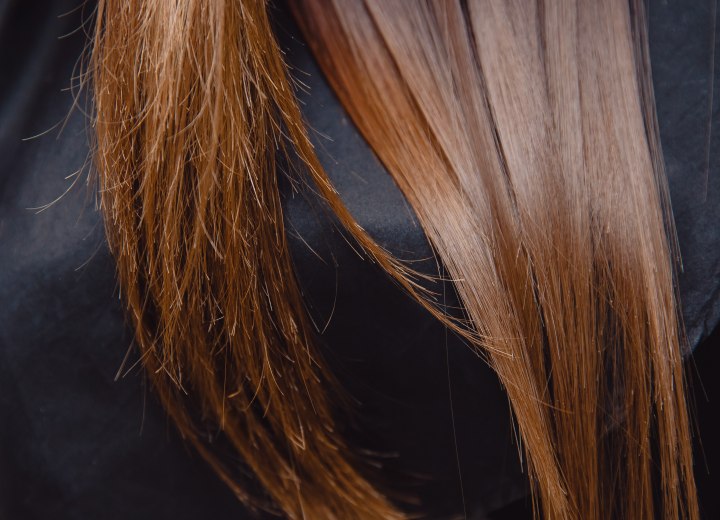Hair Re-bonding and Straightening

A: The basic theories between the traditional chemical straightening and “re-bonding” are the same: the hair is exposed to chemicals which break the disulfide bonds of the hair allowing the curl to be drawn out of the hair. The hair is then neutralized to reform the disulfide bonds in the new, straighter configuration. The differences lie in the specific chemicals used and the techniques involved.
Re-bonding, thermal reconditioning, Japanese straightening - or any of the other terms used to describe these new techniques – use a combination of chemicals for straightening and conditioning agents, along with thermal irons to ensure a totally straight result. The process is much more labor intensive, but when done properly results in the hair shaft being left in a sleek and smooth state, with the cuticle layer “bonded” into a closed position.
Another big difference is the result. With traditional straightening, you can achieve a straight result, but the level of “perfect straightness” depends largely on the starting wave of the hair. With the newer techniques, you can end up with “stick straight” hair that hangs sleek and smooth.
Finally, there is cost. With a traditional straightening technique, you can expect to pay a fee comparable to most permanent wave services. The formulas used are similar, and the techniques are no more time intensive than wrapping a perm. However, due to the amount of time involved (several hours in most cases) “re-bonding” and such intensive services can run you from $450 and up depending on things like where you live and the length of your hair.
In some cases, with longer than shoulder length hair, these new processes have been known to cost as much as $1,200 in the larger cities. (Be aware that part of this is due to cost-of-living differences and partially due to the experience level of the stylists performing the service.)
©Hairfinder.com
See also:
Permanent hair straightening
What is Thermal Restructuring?
What is the difference between a traditional relaxer, Japanese and Brazilian straightening?